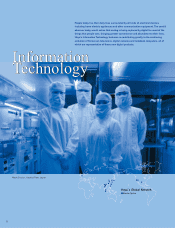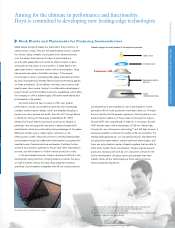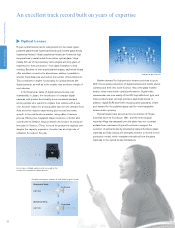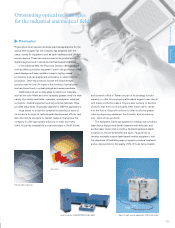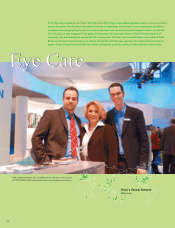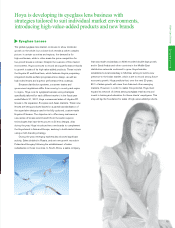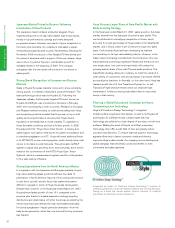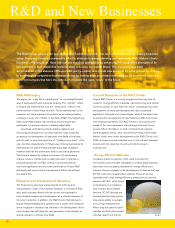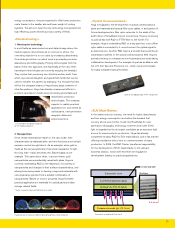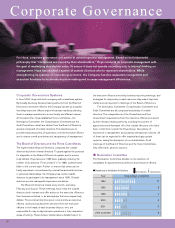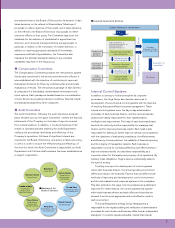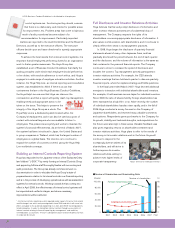Pentax 2007 Annual Report Download - page 20
Download and view the complete annual report
Please find page 20 of the 2007 Pentax annual report below. You can navigate through the pages in the report by either clicking on the pages listed below, or by using the keyword search tool below to find specific information within the annual report.
18
Foldable acrylic IOL: HOYA AF-1 (UY)
IOL injector: HOYA Injector System HOYA-IS
6
.
0
mm
12
.
5
mm
As medical treatment continues to improve, the percentage of
seniors in society is increasing, especially in developed countries.
Together with this “aging” phenomenon, the incidence of
age-related cataracts is also on the increase. Cataract disease is
an ailment that causes the eye’s lens to become cloudy with
advanced age. It leads to a deterioration in vision, and if the
disease progresses, there is even a danger of blindness. An IOL is
an artificial lens that is inserted after removing the clouded lens in
a surgical operation. It is a revolutionary medical device that can
be used to restore visual acuity to people who have lost it due
to cataracts.
There are two types of IOL: the conventional hard type and
the new foldable soft type. The foldable IOL greatly reduces the
level of patient discomfort in the cataract operation, and this type
of lens now accounts for 95% of all IOLs sold in the Japanese
market. Hoya produces and sells a soft IOL that can be inserted
through a very small incision, as well as an injector system that
greatly simplifies the surgery. Hoya continues to improve these
devices. Ophthalmologists have also warmly welcomed Hoya’s
yellow-type lens that, in addition to reducing UV light transmission,
also helps to protect the retina, and market share continues to
expand steadily.
Sales growth in the European market is driven mainly by
Germany and France. Hoya’s market share in these countries is
still relatively low, so Hoya believes that there is plenty of potential
for further growth in sales. Hoya is investing actively in expanding
sales, by deploying sales and technical specialists to key
countries, holding seminars, and conducting surgery
demonstrations. The company is also seeking to boost recognition
of the Hoya brand by enhancing its collaboration with
ophthalmologists.
Sales are growing in Asia. In addition to its existing markets in
China and South Korea, Hoya is developing a new market in
Thailand. In the United States, Hoya is proceeding with the formal
procedures necessary for FDA approvals, and it is expecting to
receive them, including production process approvals, in 2008.
In the area of IOLs, Hoya is seeking to develop a number of
improvements so it can market next-generation products that
meet a variety of needs. Market demands include greater
protection against post-operative infection, a benefit expected
from a smaller surgical incision. There is also demand for lenses
that have greater stability within the eye, and for lenses that have
a smaller chance of being associated with the formation of
secondary cataracts. Hoya is tackling these issues by working to
develop products that will be even easier and safer to use, and
offer even greater functionality, such as protection for the retina.
Put the sparkle back in your eyes with IOLs:
Hoya meets medical treatment needs with optical technologies
Intraocular Lenses (IOLs)
Intraocular Lenses (IOLs)
Health Care Division


